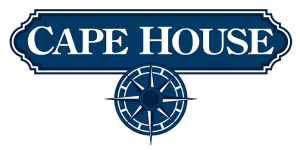Jacksonville’s moving African American Heritage Trail gives residents of this beautifully diverse city a window into the rich Black history in our area. Check out the self-guided audio tour and make sure to hit these seven stops on your journey as you learn, remember, and celebrate the history of African Americans in Jacksonville.
Kingsley Plantation
Part of the Timucuan Ecological and Historic Preserve, Kingsley Plantation holds distinctions as Jacksonville’s oldest residence and Florida’s last standing plantation home. Established by Zephaniah Kingsley, Jr., and his Senegalese wife Anna Madgigine Jai Kingsley (Anta Njaay), the plantation features a main house and barn both built around 1798, and well-preserved slave quarters built around 1822. Learning about the stories of the enslaved and how they lived can be a powerful way of honoring them.
James P. Small Memorial Stadium
Pay a visit to a stadium where baseball greats like Satchel Paige and Roy Campanella played. Built in 1936-1937, James P. Small Memorial Stadium was home to the Jacksonville Red Caps of the Negro League, as well as several minor league teams. One of those teams, the Jacksonville Braves, featured 19-year-old Henry “Hank” Aaron for one season.
The Ritz Theatre & Museum
Transport yourself nearly a hundred years in the past, and imagine movie nights at the stunning Ritz Theatre & Museum, situated at West State Street and North Davis Street. Constructed in 1929, this landmark building incorporates Egyptian Revival, Mediterranean Revival, and Art Deco styles, and it operated for nearly 30 years as a movie house catering to Jacksonville’s Black community.
Old City Cemetery
Northeast of downtown Jacksonville in the Oakland neighborhood, Old City Cemetery is home to the graves of 50 African American veterans – called Buffalo Soldiers – including some who served in the Union Army. Alternatively known as the Duval Colored Cemetery or the “Freedmen’s Cemetery,” Old City Cemetery dates back to 1852 and served an important role as the resting place for many of Jacksonville’s African American families.
Norman Studios
Norman Studios marks an interesting chapter in Jacksonville's history as a leader in cinema. Richard E. Norman, Sr., purchased the studio in 1922 and broke barriers as one of the first movie producers to make films with Black casts for Black communities. Unlike other films of the time, Norman’s movies notably portrayed Black characters in a positive light. Though he produced eight films at Norman Studios, only The Flying Ace (1926) is known to exist.
“Lift Ev’ry Voice and Sing” Park
James Weldon Johnson has earned a place as one of the most influential individuals born in Jacksonville through the iconic song Lift Ev’ry Voice and Sing, which he co-authored with his brother, John Rosamond Johnson, in the late 1800s. “Lift Ev’ry Voice and Sing” Park marks James Weldon Johnson’s birthplace, at the intersection of Houston and Lee Streets.
Old Stanton High School
You’ll also want to make a stop at Old Stanton High School, the first public Black school in Jacksonville. The school’s name honors Edwin M. Stanton, an abolitionist who served under Abraham Lincoln as secretary of war. James Weldon Johnson was a student at Old Stanton and also served as principal from 1894 to 1902.
For more local recommendations and sightseeing ideas, make sure to visit the Cape House blog.


